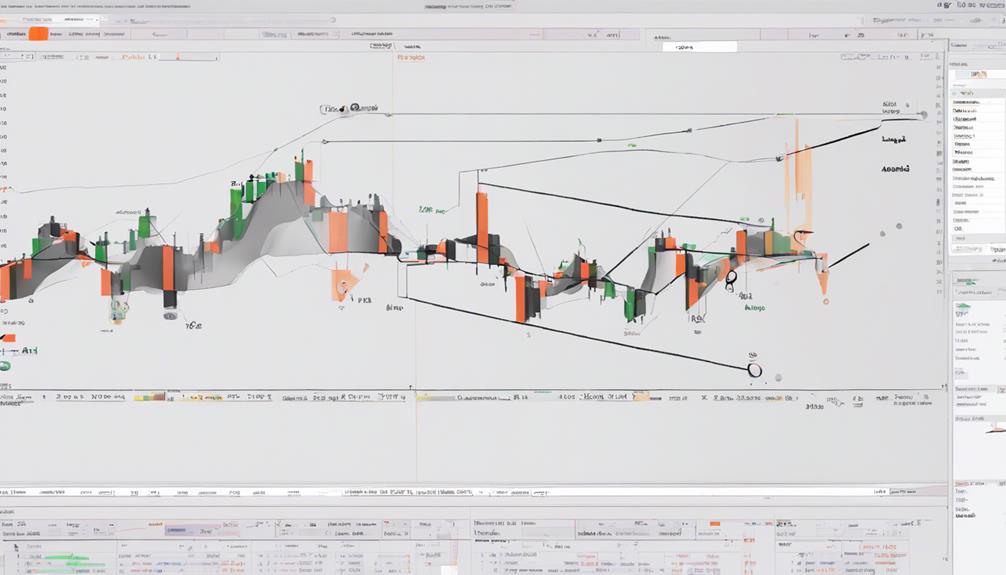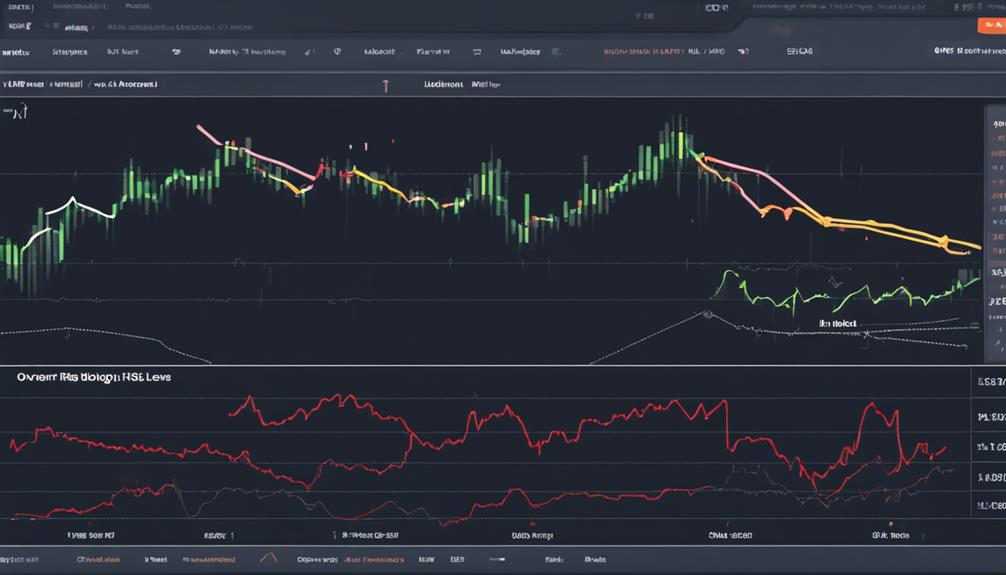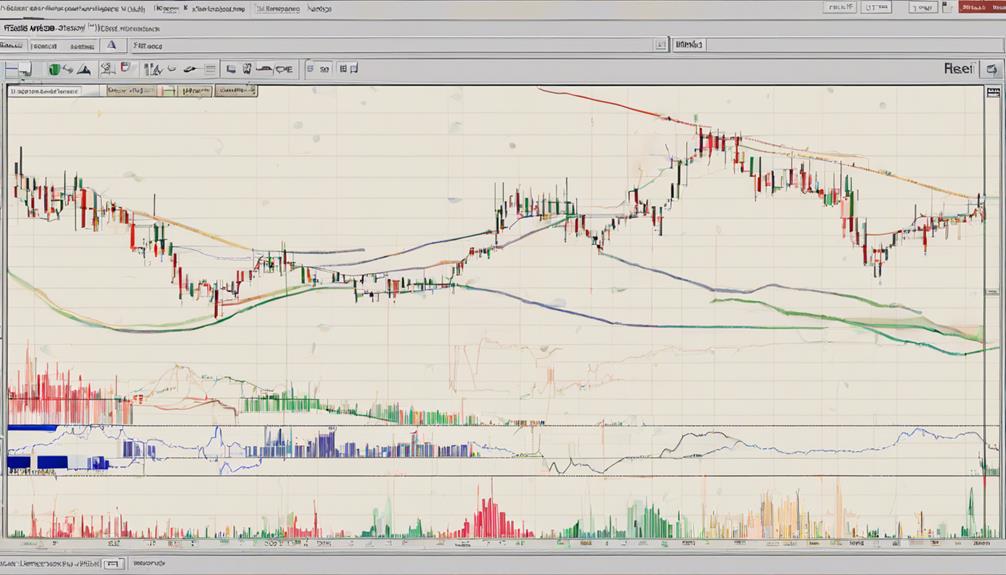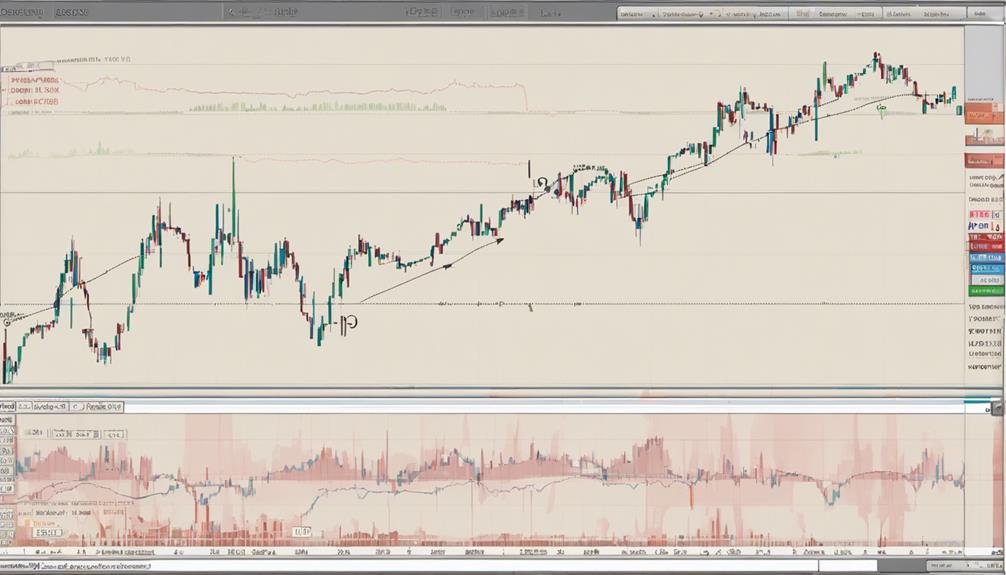Mastering the Relative Strength Index (RSI) involves analyzing average gains and losses to derive RSI values ranging between 0 and 100. Levels above 70 suggest overbought conditions, while levels below 30 indicate oversold conditions. Experiment with different periods and adapt parameters to market conditions for best performance. Key thresholds at 70 and 30 help interpret RSI levels, along with confirmation signals and divergence. Integrating RSI with technical tools like moving averages and Bollinger Bands enhances trend analysis and volatility insights. Understanding RSI calculation, parameters, interpretation, and integration with technical tools is important for informed trading decisions in the financial markets.
Understanding RSI Calculation Process
The process of calculating the Relative Strength Index (RSI) involves analyzing the average gains and losses over a specified period, usually 14 days, to determine the Relative Strength Value. By comparing the average gains to the average losses, traders derive the RSI value, which typically ranges between 0 and 100. Levels above 70 indicate overbought conditions, suggesting a potential reversal or pullback, while levels below 30 signal oversold conditions, indicating a possible buying opportunity. Historical price data is essential in RSI calculations as it assists in identifying trend reversals accurately.
Understanding the RSI calculation process is essential for interpreting market sentiment and making informed decisions regarding entry or exit points in trading. Traders rely on RSI not only for identifying potential trend reversals but also for gauging the strength and momentum of a price movement. Mastering the RSI calculation process allows traders to navigate the market with a more objective approach, leveraging this technical indicator to enhance their trading strategies effectively.
Setting Optimal RSI Parameters

When determining the ideal RSI parameters for your trading strategy, it is important to experiment with different periods to align with your preferred trading style and market conditions. To set best-fit RSI parameters effectively, consider the following:
- Experiment with Different Periods: Try RSI periods like 9, 14, or 21 days to see which aligns best with your trading approach.
- Consider Sensitivity to Price Changes: Shorter RSI periods, such as 9 days, are more responsive to price movements, offering quicker signals for active traders.
- Adapt to Market Conditions: Adjust RSI parameters based on the current market environment and the specific asset you are trading to enhance the effectiveness of your strategy.
- Align with Trading Style: Choose RSI settings that complement your trading style, whether it's more aggressive with short-term trades or more conservative with long-term investments.
Interpreting RSI Levels Effectively

Utilizing the Relative Strength Index (RSI) effectively involves a meticulous interpretation of its levels to make informed trading decisions. When analyzing RSI levels, it is essential to take into account key thresholds such as 70 and 30. RSI levels above 70 indicate overbought conditions, suggesting a potential price reversal, while levels below 30 signal oversold conditions, presenting a possible buying opportunity. However, it is important to note that RSI levels crossing these thresholds do not automatically trigger buy or sell signals; additional analysis is necessary for decision-making.
| RSI Level | Interpretation |
|---|---|
| Above 70 | Overbought conditions, potential reversal in price |
| Below 30 | Oversold conditions, potential buying opportunity |
Confirmation signals, such as trend analysis or chart patterns, play a significant role in interpreting RSI levels effectively. Furthermore, extremely low RSI levels below 20 can strengthen the case for a buying opportunity. Divergence between RSI and price movements can also provide valuable insights for traders. By understanding these nuances and incorporating confirmation signals, traders can enhance their decision-making process when utilizing RSI levels for trend analysis.
Integrating RSI With Technical Analysis Tools

Integrating the Relative Strength Index (RSI) with various technical analysis tools enhances the accuracy of trend identification and signals in financial markets. When combined with other tools, RSI can provide a more thorough view of market dynamics.
Here are four ways to integrate RSI with technical analysis tools effectively:
- Moving Averages: Using RSI in conjunction with moving averages can help confirm trends and filter out false signals, providing a clearer picture of market direction.
- Bollinger Bands: Combining RSI with Bollinger Bands aids in identifying potential reversal points and changes in volatility, offering insights into market momentum shifts.
- Fibonacci Retracement Levels: Integrating RSI with Fibonacci retracement levels enhances support and resistance analysis, assisting traders in identifying key price levels.
- Chart Patterns: Pairing RSI with chart patterns like head and shoulders formations can generate robust trade signals, aiding in decision-making based on pattern recognition and RSI confirmation.
Leveraging RSI for Informed Trading Decisions

Building on the enhanced market insights provided by integrating the Relative Strength Index (RSI) with various technical analysis tools, leveraging RSI for informed trading decisions involves strategically interpreting RSI levels and divergences to optimize trading strategies.
RSI values above 70 indicate overbought conditions, suggesting a potential price reversal, while RSI below 30 signifies oversold conditions, presenting possible buying opportunities. Recognizing Bullish divergence, where price bottoms decrease while RSI bottoms increase, can indicate a forthcoming trend reversal. Conversely, identifying Bearish divergence, characterized by price highs increasing while RSI highs decrease, may signal an imminent market shift.
Frequently Asked Questions
How Do You Calculate RSI Step by Step?
To calculate RSI, first determine a time period, traditionally 14 days. Calculate average gains and losses over this period. Divide the average gain by the average loss to get the relative strength value. Apply this to the RSI formula with smoothing calculations.
Interpret the result on a 0-100 scale to identify overbought and oversold conditions. This process involves a systematic breakdown of the RSI formula and its practical application in technical analysis.
How Do You Use the RSI Relative Strength Index?
When utilizing the Relative Strength Index (RSI) in trading, investors analyze RSI indicators, trends, signals, patterns, and divergence. RSI analysis helps identify potential oversold and overbought conditions, offering insights into market volatility.
Traders monitor RSI values above 70 for potential overbought signals and values below 30 for potential oversold signals. Understanding RSI dynamics aids in making informed trading decisions based on market conditions and trend reversals.
What Is the 70 30 RSI Strategy?
The 70 30 RSI strategy is a popular method for trend identification in trading. It involves using RSI levels of 70 to signal overbought conditions and 30 for oversold conditions. Traders often utilize these thresholds to determine entry points and exit strategies.
What Is the RSI 50 Level Strategy?
The RSI 50 level strategy is a significant tool in technical analysis to gauge market momentum and strength. Traders interpret RSI trends crossing the 50 mark to generate buy or sell signals.
Crossing above 50 indicates bullish momentum, while dropping below 50 suggests bearish sentiment. It helps identify overbought conditions, divergence patterns, support and resistance levels, and aids in decision-making during market volatility.
This strategy assists traders in making informed decisions based on momentum indicators.
Conclusion
To sum up, mastering the calculation of the Relative Strength Index is crucial for informed trading decisions.
By understanding the RSI calculation process, setting ideal parameters, interpreting levels effectively, and integrating RSI with technical analysis tools, traders can leverage this indicator effectively.
Remember, success in trading is not just about luck, but about skillful analysis and strategic decision-making.
So, keep honing your RSI skills and stay ahead of the game in the complex world of trading.


